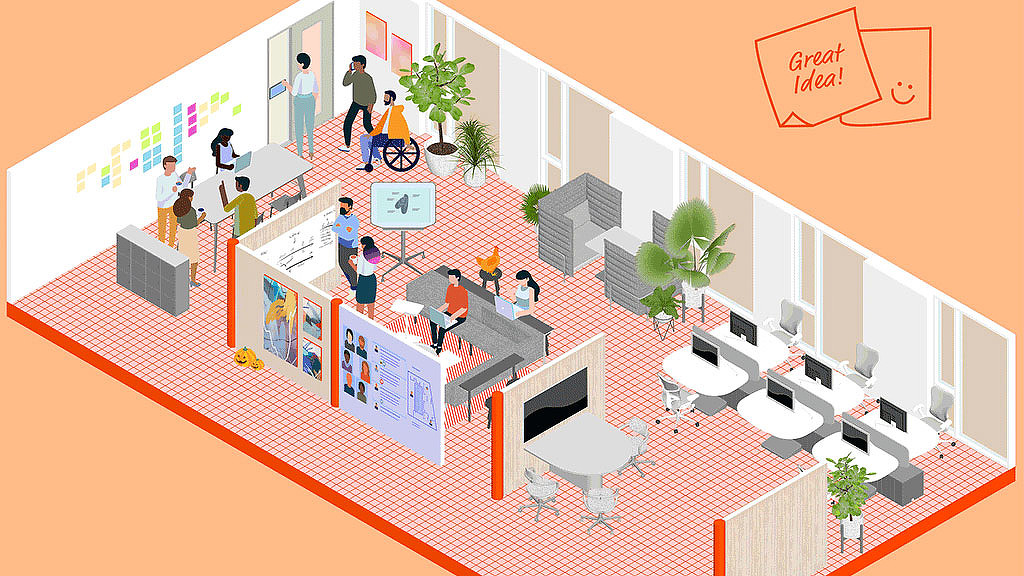3 Guidelines for Making Hybrid Meetings Work for You
March 10, 2022 | By Priscilla Teh
“Sorry, but you’re on mute.” That oft-repeated phrase — perhaps second only to “Can you hear me now?” — could be one of the most commonly used in meetings post-COVID. With hybrid meetings, we can all relate to this. We’ve probably also experienced feeling left out of conversations, struggling to guess who’s speaking (or if anyone is speaking at all), speaking over one another, the list goes on. Even after nearly two years of remote working, we must admit that hybrid meetings have been slightly chaotic.
After considerable experimentation and observations through our hybrid engagements with clients and our own teams, we know that for hybrid meetings to work, we need to be selective in our approach. Meeting formats shouldn’t just be an afterthought; to achieve an effective hybrid engagement, we need the right setup, the right facilitation, and the right purpose.
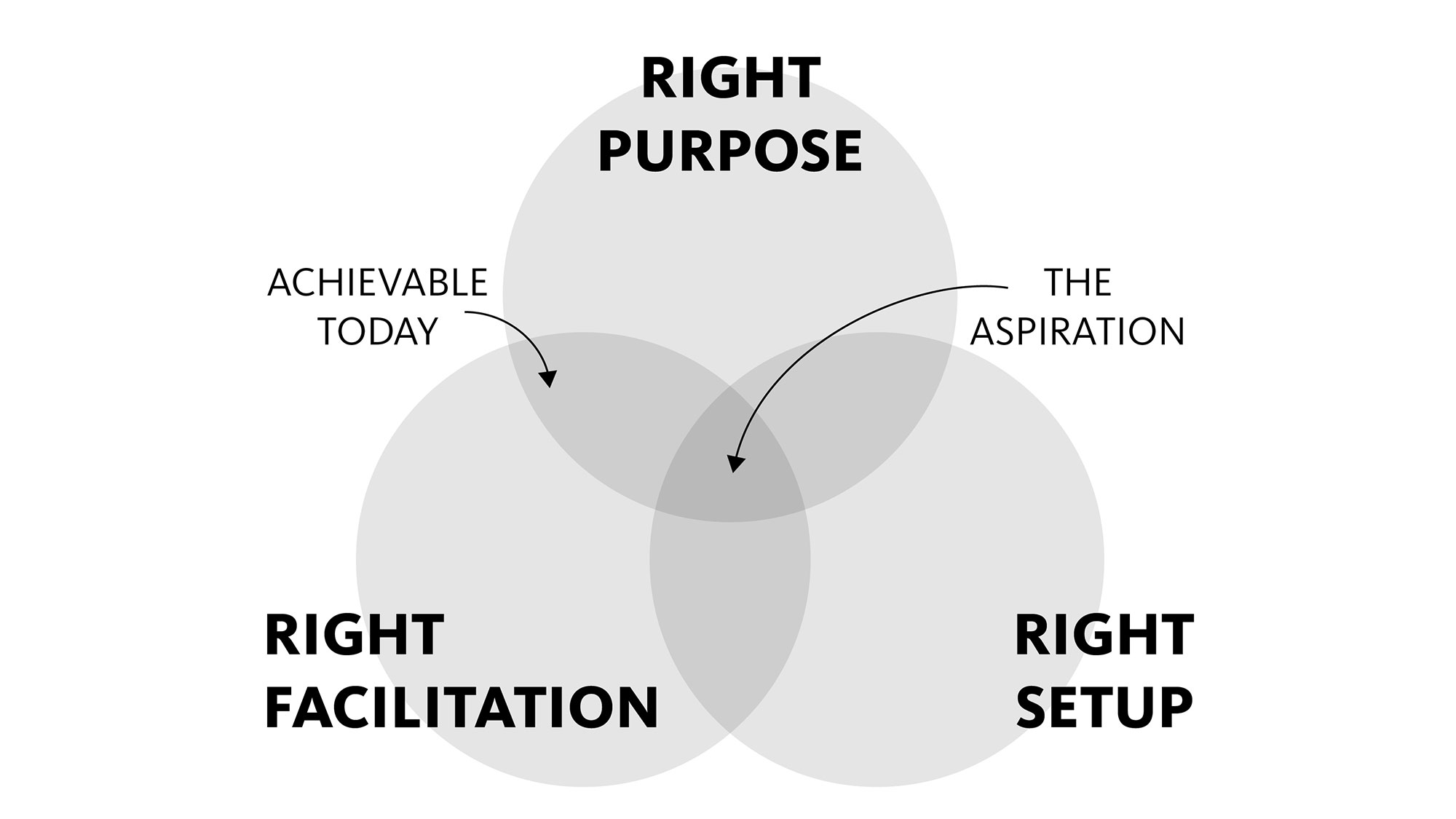
The right purpose
Engagement goals and desired output should inform the engagement format. Before deciding on whether hybrid meetings would be a suitable format, a key question to answer would be, “what are my engagement objectives?”
Whether participants should dial in remotely, attend in-person, or do a mix of both depends on two key factors: the level of active participation required from them to achieve the expected meeting outcomes, and the group size.
Here’s a general rule of thumb that we’ve come to follow: the higher the level of active participation needed and the larger the group size, the less effective hybrid meeting formats will be.
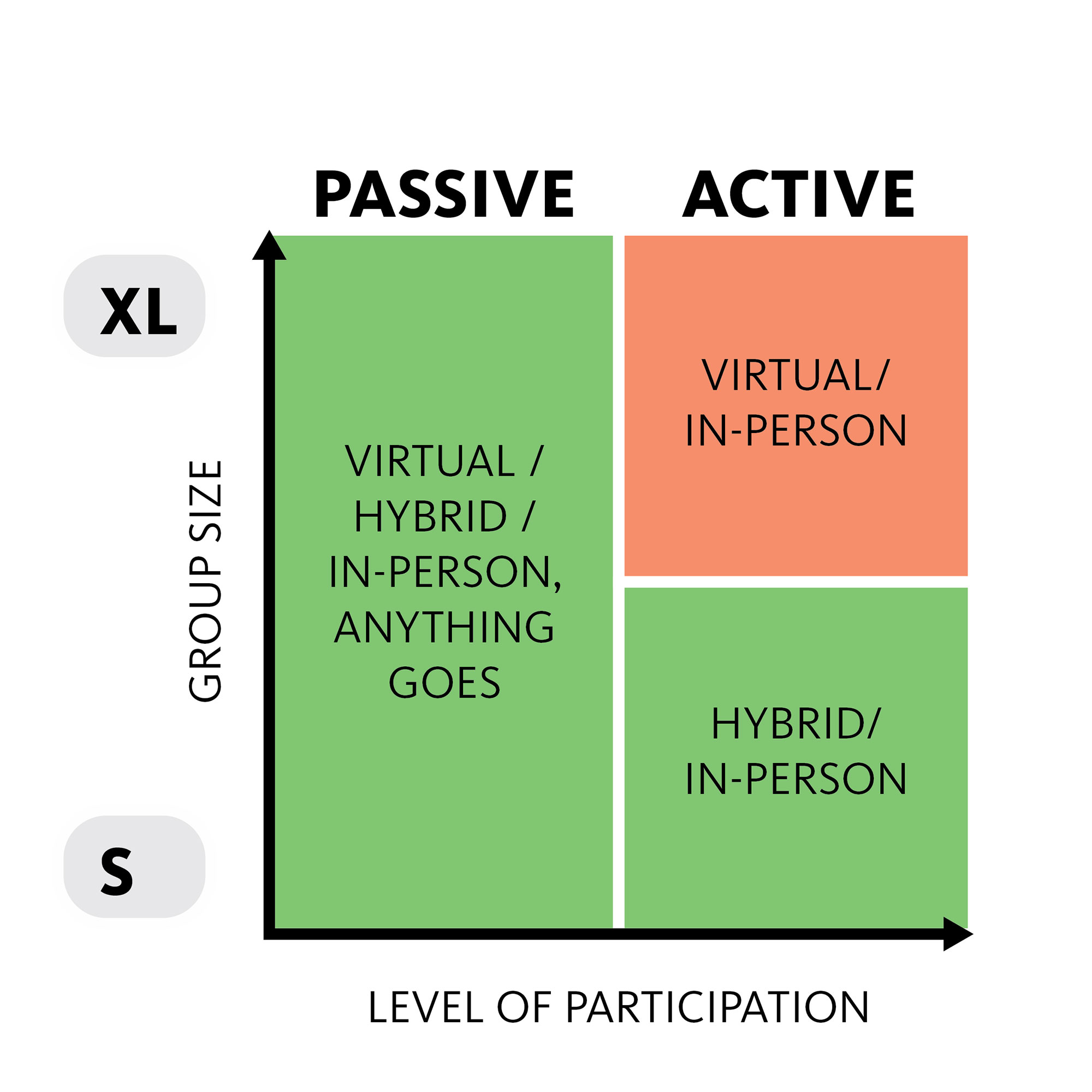
To break this down further, we’ve grouped work engagement objectives (keeping social engagements separate) into seven categories, ranging from passive to active participation, and participant group size. From here, we graded the effectiveness of hybrid participation to guide our choice of engagement formats.
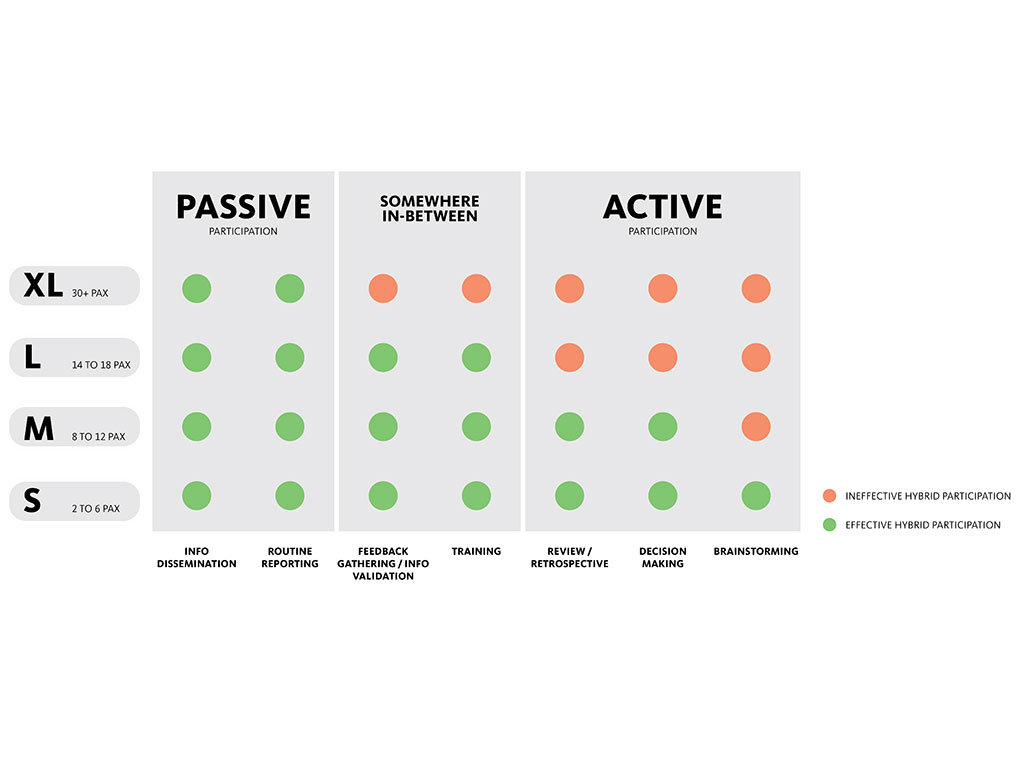
Apart from the level of active participation and group size, there are other layers to consider, such as content complexity and sensitivity, the number of in-person groups dispersed across multiple locations, attendee profile and unspoken hierarchy, and digital collaboration competency.
For now, while we can’t control the tech compatibility between our own office and that of our collaborators’ work environment, we’ve set a few simple rules for our hybrid meetings:
1. Limiting group sizes to maintain engagement.
2. Engaging with a participant profile mix that encourages dialogue where active participation is needed.
3. Sharing pre-reads and meeting agendas with participants in advance so they come prepared.
4. Setting meeting etiquette ground rules.
The right facilitation
With hybrid engagements, conversations don’t flow as “naturally” as compared to having everyone in a room in-person, and rightly so, when reading body language is off the table for those who are dialed in virtually. Hybrid interaction requires strong facilitation and mindful planning to allow for equitable participation.
The role of a facilitator includes enforcing agreed protocols for the meeting. Strongly tied to inclusivity and respect for each person in both the physical and virtual room, hybrid etiquette could include rules such as no multitasking or having side chats, and approaching participation from a digital-first perspective, such as identifying yourself before you speak, or keeping cameras on.
[Read more here: “11 Considerations for Making Hybrid Meetings More Effective.”]
From the facilitator, to the presenter, to the participants, the nuance of each person’s roles and associated enablers in a meeting play a big part in hybrid engagement effectiveness as well. Consider this: Not everyone may covet a spot in the room.
Take for example, a hybrid workshop. A co-facilitator may have one window for screen-sharing content, another for taking notes, another for running a live poll, and yet another for messaging co-facilitators in the background. Surely it becomes much more effective to remotely facilitate with a multiscreen setup as though in a control room away from the action, while having more co-facilitators, presenters, and participants in the same meeting room.
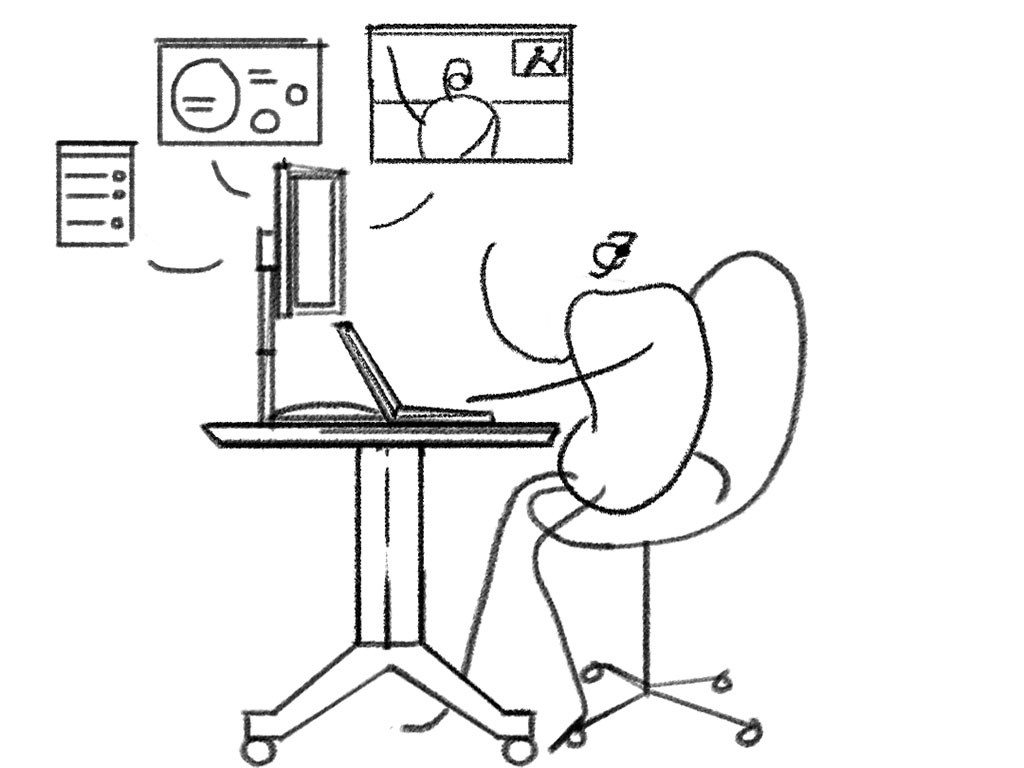
When planning for hybrid meetings, we’re increasingly mindful of breaking up the agenda to keep participants engaged. This would involve incorporating time for short quizzes, sharing videos, breakout discussions, and more. Beyond preparing the meeting agenda and keeping time, facilitators take on many added responsibilities, such as coordinating who’s doing the screen sharing, who’s in each breakout room, who’s monitoring the participant chatroom, and more. It takes a team, each with different clearly defined roles keeping in-time together, to run a hybrid engagement successfully.
The right set up
The right setup would include spatial and technological enablers. Whether to make meetings more inclusive (e.g., screens for showing both content and participant video), more intuitive (e.g., single source of sound, cameras which turn to face the speaker), or more “video call-friendly” (e.g., spatial acoustics and lighting), these are things that design and tech tools can solve for.
Gensler has designed collaboration spaces for clients with an almost panoramic screen setup, but not all clients require such immersive spaces for their hybrid meeting needs. Evolving design and tech solutions are an exciting space to watch, but not all organizations can pilot these in the short run. What we can implement at once would be the more human aspect of having the right facilitation and right purpose for hybrid engagements.
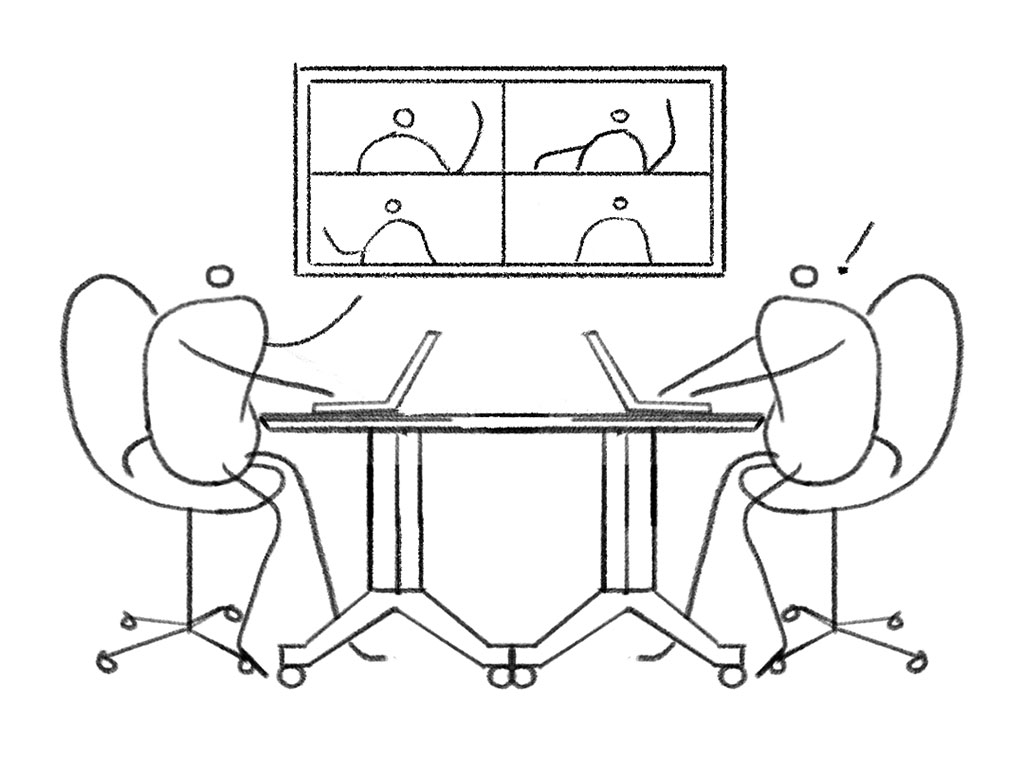
Where engagement formats are concerned, one size does not fit all. While space design and technology tools (both hardware and software) will eventually fix many pain points of hybrid engagements we face today, for now, we start by choosing our battles wisely.
Hybrid engagements won’t go away, so further articulation of key enablers and selection criteria for engagement formats is a low hanging fruit that companies can implement today. As we figure out what works best for people to be more effective (and less frustrated) through enabling equitable and inclusive collaboration, we’ll make hybrid work, work.
For media inquiries, email .
